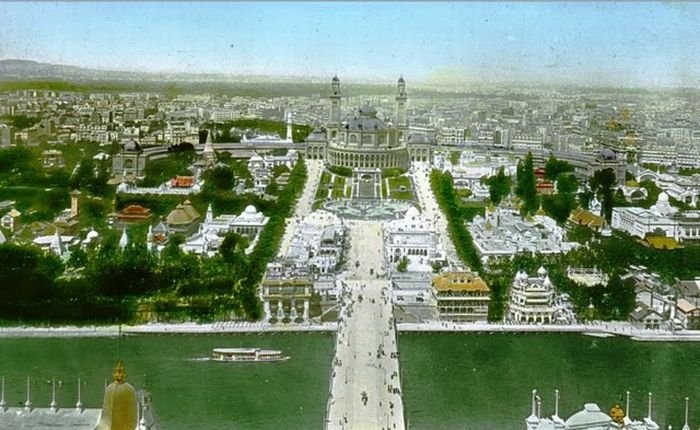|
|
History: Old Photos Of Paris, 1900, France
|
Three of the most famous Parisian landmarks are the 12th-century cathedral Notre Dame de Paris on the Île de la Cité, the Napoleonic Arc de Triomphe and the 19th-century Eiffel Tower. The Eiffel Tower was a "temporary" construction by Gustave Eiffel for the 1889 Universal Exposition, but the tower was never dismantled and is now an enduring symbol of Paris. The Historical axis is a line of monuments, buildings, and thoroughfares that run in a roughly straight line from the city-centre westwards: The line of monuments begins with the Louvre and continues through the Tuileries Gardens, the Champs-Élysées, and the Arc de Triomphe, centred in the Place de l'Étoile circus. From the 1960s, the line was prolonged even farther west to the La Défense business district dominated by a square-shaped triumphal Grande Arche of its own; this district hosts most of the tallest skyscrapers in the Paris urban area. The Invalides museum is the burial place for many great French soldiers, including Napoleon; and the Panthéon church is where many of France's illustrious men and women are buried. The former Conciergerie prison held some prominent Ancien Régime members before their deaths during the French Revolution. Another symbol of the Revolution are the two Statues of Liberty located on the Île aux Cygnes on the Seine and in the Luxembourg Garden. A larger version of the statues was sent as a gift from France to America in 1886 and now stands in New York City's harbour. The Palais Garnier, built in the later Second Empire period, houses the Paris Opéra and the Paris Opera Ballet, while the former palace of the Louvre now houses one of the most renowned museums in the world. The Sorbonne is the most famous part of the University of Paris and is based in the centre of the Latin Quarter. Apart from Notre Dame de Paris, there are several other ecclesiastical masterpieces, including the Gothic 13th-century Sainte-Chapelle palace chapel and the Église de la Madeleine.
• Parks and gardens
Two of Paris' oldest and famous gardens are the Tuileries Garden, created in the 16th century for a palace on the banks of the Seine near the Louvre, and the Left bank Luxembourg Garden, another former private garden belonging to a château built for Marie de' Medici in 1612. The Jardin des Plantes, created by Louis XIII's doctor Guy de La Brosse for the cultivation of medicinal plants, was Paris' first public garden.
A few of Paris' other large gardens are Second Empire creations: The former suburban parks of Montsouris, Parc des Buttes Chaumont, and Parc Monceau (formerly known as the "folie de Chartres") are creations of Napoleon III's engineer Jean-Charles Alphand. Another project executed under the orders of Baron Haussmann was the re-sculpting of Paris' western Bois de Boulogne forest-parklands; the Bois de Vincennes, on the city's opposite eastern end, received a similar treatment in years following.
|
|









